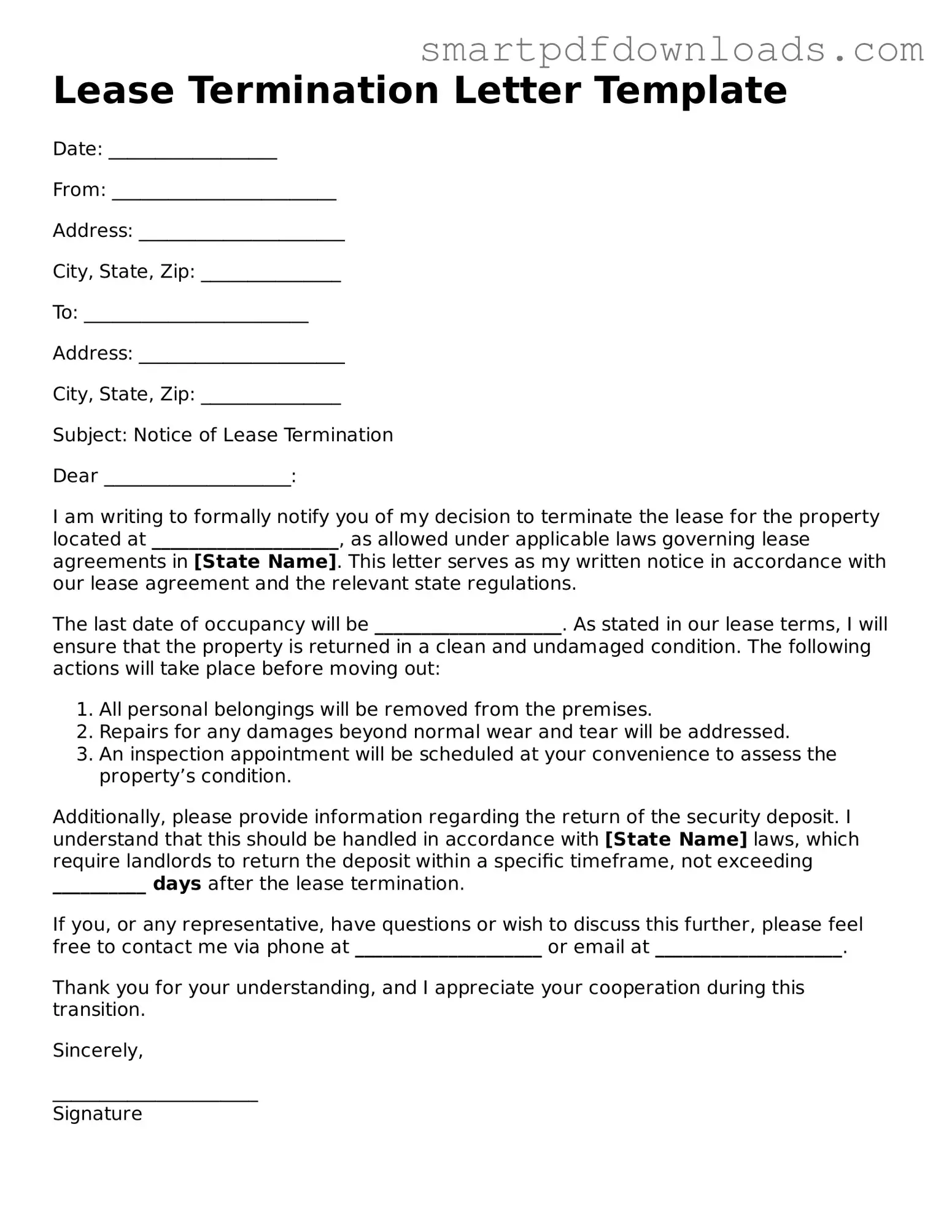Lease Termination Letter Template
Date: __________________
From: ________________________
Address: ______________________
City, State, Zip: _______________
To: ________________________
Address: ______________________
City, State, Zip: _______________
Subject: Notice of Lease Termination
Dear ____________________:
I am writing to formally notify you of my decision to terminate the lease for the property located at ____________________, as allowed under applicable laws governing lease agreements in [State Name]. This letter serves as my written notice in accordance with our lease agreement and the relevant state regulations.
The last date of occupancy will be ____________________. As stated in our lease terms, I will ensure that the property is returned in a clean and undamaged condition. The following actions will take place before moving out:
- All personal belongings will be removed from the premises.
- Repairs for any damages beyond normal wear and tear will be addressed.
- An inspection appointment will be scheduled at your convenience to assess the property’s condition.
Additionally, please provide information regarding the return of the security deposit. I understand that this should be handled in accordance with [State Name] laws, which require landlords to return the deposit within a specific timeframe, not exceeding __________ days after the lease termination.
If you, or any representative, have questions or wish to discuss this further, please feel free to contact me via phone at ____________________ or email at ____________________.
Thank you for your understanding, and I appreciate your cooperation during this transition.
Sincerely,
______________________
Signature
